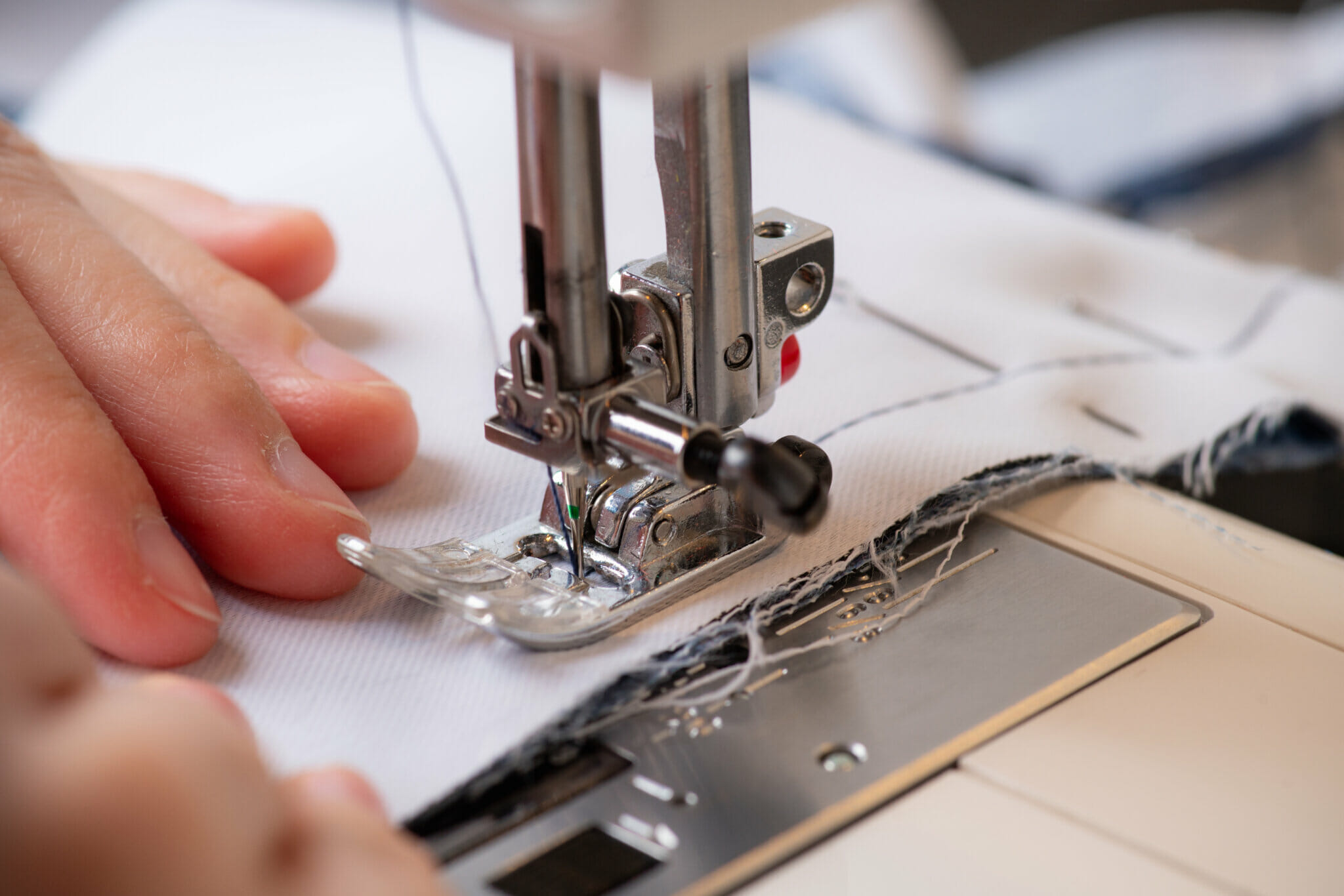Welcome to the wonderful world of sewing! If you're here, you might be itching to turn some fabric into fabulous clothing. A sewing machine is one of your best companions in this journey. It can seem a bit intimidating at first, but once you get the hang of it, you'll wonder how you ever lived without it. In this section, we'll delve into what makes a sewing machine tick, how it works, and the different types available. So, let's get ready to unravel the magic of sewing machines!
A sewing machine is a mechanical or electrical device that uses a needle to stitch fabric together. The essence of its design is to make the sewing process quicker, more efficient, and more precise than hand-sewing. Here are some key components to be aware of:
- Needle: The backbone of the sewing process. The right needle choice can make or break your project.
- Bobbin: Holds the lower thread and plays a crucial role in creating stitches.
- Presser Foot: Keeps the fabric in place as you sew, essential for maintaining even stitches.
- Feed Dogs: These little teeth move the fabric forward as you sew; they play a pivotal role in how the fabric is fed through the machine.
When it comes to types, sewing machines can be broadly categorized into:
- Mechanical Machines: Manual machines that offer basic stitching functionalities.
- Electronic Machines: Equipped with programmable patterns and more advanced features.
- Serger Machines: Ideal for finishing edges and giving garments a professional look.
Understanding your sewing machine is the first step toward mastery. And guess what? The more you practice, the easier it becomes!
Essential Tools and Materials

Now that you've got a grasp of your sewing machine, it's high time we talked about the essential tools and materials you'll need to get started. Having the right equipment can make your sewing experience not just easier but also much more enjoyable. Every seasoned sewer has a go-to toolkit filled with trusty companions. Let's break it down!
- Fabric: Choose the fabric that suits your project. Cotton is a great starter fabric due to its ease of handling!
- Thread: Ensure your thread matches your fabric. It’s available in various types, each suited for different projects (e.g., polyester, cotton, nylon).
- Scissors: Invest in a good pair of fabric scissors. Dull scissors can ruin your project, so keep them sharp!
- Seam Ripper: Mistakes happen, and that’s okay. A seam ripper is your best friend for undoing those pesky stitches.
- Measuring Tape: Accurate measurements are crucial for a well-fitted garment.
- Pins or Clips: Use these to hold pieces of fabric together before you sew. They're essential for ensuring alignment.
- Iron: Pressing your fabric and seams helps to give your finished product a polished look.
Additionally, you might consider adding the following to your toolkit:
| Tool | Purpose |
|---|---|
| Marking Tools | To mark your fabric for cutting or sewing lines without leaving a permanent mark. |
| Patterns | Pre-made designs that guide you in constructing your garment accurately. |
| Cutting Mat | A cutting surface that protects your work area and helps you cut straight. |
With the right tools in hand, you’ll be well on your way to creating stunning clothing pieces that reflect your style and personality. Remember, each tool has its function, and understanding these will empower you to tackle various sewing projects with confidence.
Understanding Fabric Types and Their Uses

When it comes to sewing clothes, understanding fabric types is crucial. Different fabrics come with unique characteristics that can influence the look, feel, and durability of your finished garment. So, let’s dive into some common fabric types and their uses.
- Cotton: This natural fiber is one of the most commonly used fabrics for clothing. It’s breathable, easy to work with, and available in a vast spectrum of prints and colors. Cotton is perfect for beginners because it’s forgiving and holds up well in various applications such as shirts, dresses, and home textiles.
- Satin: Known for its luxurious sheen, satin can be made from synthetic or natural fibers. It’s often used for evening gowns and special occasion wear. However, it can be slippery and tricky to sew, requiring some practice.
- Linen: This fabric is made from flax and is known for its breathable and moisture-wicking properties. Linen wrinkles easily, giving garments a casual vibe, which is perfect for summer dresses and casual shirts.
- Denim: A heavyweight cotton twill, denim is durable and perfect for making jeans, jackets, and skirts. It comes in various weights, and as a beginner, you might want to start with medium-weight denim to practice your sewing skills.
- Knits: Fabrics like jersey or ribbing fall under the knit category, characterized by their stretchy quality. They’re excellent for t-shirts, leggings, and any garment requiring movement. Knits can be a challenge as they often need a special needle and technique to sew correctly.
By knowing these fabric types and their uses, you’ll make better decisions in your sewing projects, ensuring that you choose the right material for the intended design and functionality.
Basic Sewing Techniques for Beginners
Now that you have a grasp of fabric types, it’s time to explore the basic sewing techniques that every beginner should learn. These skills will set a solid foundation for your sewing journey.
- Threading the Machine: Before you begin sewing, you must learn how to thread your sewing machine properly. This includes winding the bobbin and threading the upper tension. Don’t worry if you find it tricky at first; practice makes perfect!
- Straight Stitching: This is the most basic and commonly used stitch. It’s perfect for seaming pieces together. Start by practicing on scrap fabric until you can sew a straight line consistently.
- Backstitching: This technique reinforces your seams by sewing backward at the beginning and end of each seam. It prevents your stitches from unraveling, making it an essential skill to master.
- Pinking Seams: To prevent fraying, learn to use pinking shears to cut the edges of your seams. This simple technique can greatly enhance the durability of your garments.
- Hemming: Every garment needs a hem to finish the raw edges. Whether you choose a simple straight hem or a more complex blind hem, this technique will give your clothing a polished look.
As you practice these fundamental sewing techniques, don’t be afraid to make mistakes! Each error is a stepping stone on your path to mastering the art of sewing clothes. Keep at it, and soon enough, you’ll be creating fabulous garments you can genuinely call your own!
Advanced Sewing Techniques for Experienced Sewers
Welcome to the advanced sewing world, where creativity meets skill! If you've mastered the basics, it's time to elevate your sewing game with some advanced techniques. These methods not only enhance your craftsmanship but also allow you to create stunning, professional-quality garments.
Here are some advanced techniques that every experienced sewer should know:
- Flat-Felled Seams: Perfect for shirts and jeans, this technique gives your seams a neat and polished finish while providing extra durability. It's a bit tricky but definitely worth mastering!
- French Seams: Ideal for lightweight fabrics, French seams beautifully encase the raw edges, making your garments look elegant. This is especially useful for sheer or delicate fabrics.
- Bias Binding: Use bias binding to finish edges and create a professional look. It's a great way to add color and texture to any project.
- Gathering Techniques: Gathering fabric can add flair to dresses and skirts. Learn how to do it effectively to achieve that ruffled look without any bunched-up fabric.
- Interfacing: Understanding the types and applications of interfacing can elevate the structure of your garments, especially for collars and cuffs.
Experiment with these techniques to discover your personal style and signature touches. The key is to practice, so don't be afraid to revisit your favorite projects and incorporate these advanced skills. Happy sewing!
Common Mistakes and How to Avoid Them
Sewing is a fabulous journey, but even experienced sewers can occasionally trip over some common mistakes. Identifying these hiccups is the first step toward conquering them. Let's explore some of the most frequent sewing blunders along with tips on how to avoid them!
| Common Mistake | How to Avoid It |
|---|---|
| Cutting Fabric Without a Guide: | Always use a ruler or a cutting mat and double-check your measurements. |
| Poor Stitch Tension: | Adjust the tension settings on your sewing machine to suit different fabrics. |
| Ignoring the Grain of the Fabric: | Learn how to recognize the grain and cut accordingly for better drape and fit. |
| Not Pre-Washing Fabric: | Always pre-wash to avoid shrinkage and color bleeding in your final garment. |
| Neglecting to Read Patterns: | Carefully read through patterns and instructions before starting to ensure everything makes sense. |
By being aware of these common pitfalls, you can work toward creating a sewing process that runs smoothly and successfully. Remember, even the best sewers make mistakes! What's important is learning from them and continuing to enjoy your sewing journey.
7. Tips for Creating Professional-Looking Finishes
Creating professional-looking finishes can make a world of difference in your sewing projects. Here are some handy tips to elevate your sewing game!
- Press As You Go: Always keep your iron close by. Pressing seams and hems as you sew makes a huge difference in the overall appearance of your garment. It helps fabrics to lie flat and ensures that everything stays in place.
- Choose the Right Stitch: Don’t just settle for a straight stitch. Use specialized stitches like zigzag or overlock for edges to prevent fraying. A cover stitch can also be used to give a clean finish to hems, especially on knit fabrics.
- Professional Hems: Learn different hemming techniques such as blind hems or double-fold hems. These methods not only look polished but also help the hem to last longer.
- Use Bias Tape: Binding the raw edges of your fabric with bias tape can create a professional finish. It adds both style and longevity, while also preventing fraying.
- Topstitching: Don’t underestimate the power of topstitching. A simple row of stitches along seams can give your garment an extra layer of professionalism. Use contrasting thread for a pop of color!
- Turned-Under Seams: For lightweight fabrics, consider using turned-under seams. This technique conceals raw edges, offering a neat and clean finish.
- Final Quality Check: After completing your garment, give it a once-over. Clip any loose threads, press it well, and ensure all closures work smoothly.
8. Caring for Your Sewing Machine
Taking care of your sewing machine is crucial for smooth operation and longevity. Here are some practical tips to keep your machine in top-notch condition:
- Regular Cleaning: Dust and lint can accumulate inside your machine, affecting its performance. Use a soft brush to clean the feed dogs and other accessible areas regularly.
- Oiling: Consult your manual for the specific points to oil. Oil your machine as recommended to keep moving parts lubricated and functioning well.
- Use the Right Needle: Always use the appropriate needle for the fabric you are working with. A dull or incorrect needle can cause problems like skipped stitches or fabric damage.
- Change the Bobbin Regularly: An empty bobbin can lead to thread jams or uneven stitches. Always replace your bobbin before it runs out.
- Check Tension: If your stitches are uneven, it might be a tension issue. Regularly check and adjust the tension settings to match different fabrics.
- Store Properly: When not in use, cover your machine to prevent dust accumulation. Make sure it’s stored in a stable environment—avoid extremes like humidity.
- Professional Servicing: If you notice persistent problems, consider bringing your machine in for a tune-up by a professional. This can extend its lifespan significantly.
Mastering the Art of Sewing Clothes with a Sewing Machine
Sewing clothes with a machine is not just a craft; it's an art that combines creativity, precision, and skill. Whether you are a beginner or have some experience under your belt, mastering sewing techniques can elevate your creations and bring your fashion ideas to life. Here are essential aspects to consider as you embark on your sewing journey:
Essential Tools for Sewing
To start, you'll need a few basic tools:
- Sewing Machine: Invest in a reliable and user-friendly sewing machine suitable for your projects.
- Fabric: Choose high-quality fabrics that match the style and purpose of your garment.
- Pattern: Use commercial patterns or create your own for structure.
- Sewing Accessories: Don’t forget pins, scissors, measuring tape, and chalk or fabric markers.
Basic Sewing Techniques
Understanding and mastering fundamental techniques will bolster your sewing skills:
| Technique | Description |
|---|---|
| Threading the Machine | Learn how to thread your machine correctly for smooth sewing. |
| Straight Stitch | The most basic stitch that forms the foundation of most sewing projects. |
| Backstitching | A technique to reinforce seams for durability. |
| Hemming | Finishing the edges of fabric to prevent fraying. |
Tips for Successful Sewing
Here are some tips to aid your progress:
- Start with simple projects to build your confidence.
- Practice makes perfect; dedicate time regularly to improve.
- Don’t hesitate to seek help from online tutorials or local classes.
In conclusion, becoming a pro at sewing requires patience, practice, and a passion for creativity. With the right tools, techniques, and mindset, anyone can master the art of sewing clothes with a sewing machine and create stunning, personalized garments that showcase their unique style.










